THE ALIEN: SERGEI VASYLEVICH RACHMANINOFF (1873-1943)
If you imagine yourself who finds himself, down a dark and lonely street in the middle of the night, a very tall man, with a broad physical build, very short hair, large and separated knuckles (which denote aggressive personality according to Conan Doyle), enormous hands, with very marked features of the face, wide lips and with a hieratic expression, with a face of “few friends”, dressed elegantly.
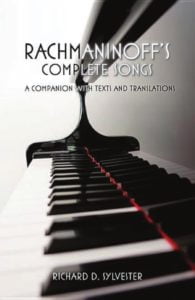
If this man approaches you in those circumstances, at the very least, I would be afraid. At that moment, he asks: What time is it, please? Then you would calm down a lot, and he would observe a slight smile on Rachmaninoff’s face, almost like that of the Mona Lisa“.
Sometimes the appearances deceive. Many pianists need to move their body a lot to give lyricism to their interpretations.
However, others are like rocks in front of a piano, and yet still get performances much deeper and more lyrical than the previous ones. This is the case of Rachmaninoff, and also of Arthur Rubinstein.
Best Sheet Music download from our Library.
In the book of Harold C. Schönberg “The Great Pianists”, in a chapter titled “the puritan”, it is said:
“(…) The tall, dour, lank, unsmiling figure of Sergei Rachmaninoff, with its seamed face and head of close-cropped (almost shaved) hair, invariably reminded the public of a convict on the loose.”

Rachmaninoff in concert.
This phantasmagorical character that the figure of Rachmaninoff produces, this impression aural, has a faithful reflection in his music.
At conceptual levels, something The same is true of Liszt. While Liszt reflects on us a music full of mythological fights, conflicts between life and death, Rachmaninoff shows a ghostly, ironic personality, like someone who thinks that these deep thoughts can be better expressed in a way ironic, sometimes humorous, reflecting it in a music full of contrasts, almost appearing superficial.
But it is quite the opposite, what he actually demonstrates is honesty and naturalness, evidence of being a primary music that is born from the heart. Precisely there is the Rachmaninoff’s magical personality.
Its music, sincere in itself, it does not obey objectionable musical tendencies musically, Rachmaninoff belongs neither to romanticism nor to classicism nor to post-romanticism. Rachmaninoff has always been accused of being a conservative, of anti-novel.
Quite the opposite of what is thought: You have to be brave to compose in that style, while they were already making their first steps into music in entirely new languages. And it is that the difficulty of classification of Rachmaninoff’s music within a period is totally logical since his music is so personal to him, so born from the heart, which does not require the use of new resources or pursues originality in language.
Although we can say that his music is typically Russian, he always argued that he never proposed to make Russian music, but his music is like that because he is So.
Rachmaninoff was always very reluctant to reveal his source of inspiration. About his creative process, he used to say these words: “I hear the music in my head. When the music stops, I stop writing.”
He once recounted to a journalist that his inspiration in many cases came from sources literary or pictorial. It is known that “The Isle of Dead” was composed after observing some paintings by Arnold Böcklin with the same title. In this same painter, the Studies-Tableau of him are inspired. But Rachmaninoff was very insistent that his sources of inspiration were not more than inspirations, and not previous programs to develop the pieces, except in one piece:
The “diabolical” study in La minor Op.39 n.6, one of the three that he recorded, and that as he himself commented to Respighi in a letter, is the musical expression of the tale popular fairy tale “Little Red Riding Hood”, of which he is also participate in the Prokoffian “Diabolical Suggestion”.
Please, subscribe to our Library.
If you are already a subscriber, please, check our NEW SCORES’ page every month for new sheet music. THANK YOU!
But after a first analysis, it is clear to deduce that there are two leitmotifs that appear and reappear in Rachmaninoff’s music:
On the one hand the sound of bells from his early years in St. Petersburg, taking the maximum expression of him in “The bells”, his favorite of among his compositions. We can also quote the prelude Op.32 N.3 in My biggest.
On the other hand we must talk about Russian Orthodox choral music, which made a great impression on him, as did the music of North America, of which we can find traces in numerous pieces, in special in the Rhapsody on a Theme by Paganini, which conjugates music American with his personal Russian flair; and of course, in his room concerto, of which the second movement is inspired by a spiritual black.
Rachmaninoff shared with his friend Feodor Chaliapin the firm conviction that a piece always had a unique climax. This interpretive method consisted of determining in each piece what the climax is, and everything In addition, each “p” or each “ff” must lead to that climax, or come out of it.
It is an axis on which the interpretation is based of the piece, a spotlight placed exactly in the ideal place, which illuminates the interpretation as if it were light in a pictorial creation.
The method of Rachmaninoff’s study consists of working on a piece of music as if you were the composer yourself, dividing the study into different phases.
Expressing it in his own words: “You must take the work apart, peer into every corner, before you can assemble the whole” . Of course, always keeping a logic with about the “turning point,” or climax.
The worst review that he himself could do at the end of a recital is to forget that point culminating. It made no difference to the interpretation of this or that passage were great, as he himself recounted: “either the whole made sense, or nothing did”.
This is a globalizing conception of a piece of music, means putting oneself in the place of the composer and not limited to being an interpreter, is the difference between the architect and the mason. The mason builds the brick house brick, the architect has it all in his head.
To Rachmaninoff only two or three conductors understood truly his work: Eugene Ormandy (New York Philharmonic), Leopold Stokowsky (Philadelphia P.), and Dimitri Mitropoulos.
Currently tends to underestimate Rachmaninoff’s recordings, to classify them within an interpretive style belonging to a period historical-musical. It tends to “romanticize” the music of Rachmaninoff, to make numerous ritardandos in the most lyrical passages, to play the slower music of him.
This is supposed to be a trend of the current musical thought, but nevertheless I advocate because it is about a misconception. A big mistake. All these piano players that play so their music, they don’t understand Rachmaninoff at all. Being lovers and studious of his music and his figure, we would give these recommendations of practices for pianists trying to play and understand his music:
1º.- The most important is to establish the climax of the piece, its high point. Does not have why be a short passage, nor does it have to be in “fff”, it is simply the harmonic and formal climax. It has to be studied formally the piece in a first stage.
2º.- The accents. Rhythm is essential at Rachmaninoff, you have to keep it up from start to finish unless otherwise stated. Forget the ritardandos and mannerist sensitizations at each end of phrase. You should always accentuate the strong part of each measure, in addition to the corresponding accents as written in the music sheet. You have to respect the score, looking for editions that are not reviewed by anyone other than Rachmaninoff himself.
3º.- The contrasts. There must be diabolical, phantasmagorical contrasts, it must give “fear”, between the Forte and the Piano. The fabulous technique of Rachmaninoff allowed him to make such contrasts at a speed higher.
4º.- Many Sometimes melodies are interspersed in a great way, playing with the voices. These melodies have to be heard as if it were a fugue, as as Rachmaninoff does in his recordings.
5º.- Stretch the hand to the max The only way for Rachmaninoff’s music to sound to Rachmaninoff is to use fingerings apparently “impossible” because of the extent they entail, but with the study are becoming affordable. The jumps think of them as extensions. The fear of jumping is only in your head, not in your fingers. reject editions with finger crossings and special fingerings for hands little.

Rachmaninoff’s hands
6º.- You don’t have to get scared or self-conscious hearing how quickly Rachmaninoff plays this one or that passage. Rachmaninoff only existed one, let’s not try to imitate the verbatim what he does, but if he does it quickly, we must try to do it like this. On the other hand, do not fall into the error of consider Rachmaninoff as a “machine”: what He plays fast, showing enormous talent and giving balance to the whole piece, because his technique allows it, let’s not be envious, let’s be humble and recognize our limitations!
Rachmaninoff himself was full of contradictions and was never happy with his interpretations of him, he even went through a period of depressions, from which he got out thanks to the help of psychiatrist Dr. Nikolai Dahl, and to whom he dedicated the second concert to him.
Must be realized the enormous talent of Rachmaninoff, playing his compositions. It is about perceiving something spiritual, something that cannot be studied or to say in words, to understand the austere Russian spirit, ironic, intelligent, phantasmagorical, of Rachmaninoff. Getting to cry listening to his Humoresca in G Op.10 n.5, or coming to hate his second concerto for piano and orchestra (comparing it with his other concertos, of course), they are not contradictory attitudes.
If we pretend to introduce you to a deeper Rachmaninoff than the Rachmaninoff that fans know, we’d suggest these pieces: Variations on a Theme of Corelli, Sonata No.2 for solo piano, Concerto No. 4 for piano and orchestra, Humoresca… and actually, many, many more, that are not usually played in concert halls due to their tremendous difficulty. Any pianist will recognize that it is much easier to play a concerto by Liszt or one by Chopin, than to start studying one by Rachmaninoff.
Hoping these tips help you, and you end up loving Rachmaninoff like many we already do it. But do not try to believe that you know how to play this or that Rachmaninoff’s piece without first having searched for and heard his recording: you will have big surprises. Hoping that from those clashes between the personality of each one and that of Rachmaninoff himself, visions are born positive and fruitful, and you understand this genius better.
The figure of Rachmaninoff is becoming more and more popular, proof of this and What is nice is the fact that web pages on the Internet containing the name “Rachmaninoff” are the most visited of among all the classical music websites, according to the counters of visits.
To end we’d conclude with two sentences, the first collected from a letter from Rachmaninoff to Medtner, after a series of recitals, about the “Variations on a Theme by Corelli”, and the second a comment that I subscribe:
“Not played them in full once. I was guided by the coughing of the public. When the coughing increased, I would leave out the next variation … In one concert … the coughing was such that I played only 10 variations … My record was 18. However, I hope that you will play them all and that you will not cough”.
“Rachmaninoff was made of steel and gold; steel in his arms, gold in his heart. I can never think of this majestic being without tears in my eyes, for i not only admired him as a supreme artist, but i also loved him as a man” ( Josef Hofmann, “In memory of Rachmaninoff”).
Browse in the Library:
| Artist or Composer / Score name | Cover | List of Contents |
|---|---|---|
| Astor Piazzolla 6 Tangos |
 |
Astor Piazzolla 6 Tangos |
| Astor Piazzolla Angel (Complete) For Piano (Different Version) |
 |
Astor Piazzolla Angel (Complete) For Piano (Different Version) |
| Astor Piazzolla Ave Maria (Piano) |
 |
|
| Astor Piazzolla Balada Para Un Loco (Cacho Tirao) Guitar |
 |
|
| Astor Piazzolla Maria De Buenos Aires, Opera Tango (Partitura completa) |
 |
|
| Astor Piazzolla Milonga Del Angel (Piano Solo) Arranged By Prof. John Mortensen Slow Tango |
 |
|
| Astor Piazzolla Milonga Del Angel (Piano Solo) Original |
 |
|
| Astor Piazzolla sheet music Le Grand Tango Score For Viola And Piano |
 |
|
| Astor Piazzolla Vuelvo al sur (piano) |
 |
|
| Astor Piazzolla – 5 piezas para guitarra (guitar sheet music) | Astor Piazzolla – 5 piezas para guitarra (guitar sheet music) | |
| Astor Piazzolla – Picasso (Tango) Piano |
 |
|
| Astor Piazzolla 4 Estaciones Porteñas Guitar arr. |
 |
|
| Astor Piazzolla Nightclub 1960 Duo Flute Guitar |
 |
|
| Astor Piazzolla – Adios Nonino (Two Pianos) | Astor Piazzolla – Adios Nonino (Two Pianos) | |
| Astor Piazzolla – Adiós Nonino (guitar sheet music) |
 |
|
| Astor Piazzolla – Adios Nonino Piano Solo |
 |
|
| Astor Piazzolla – Album No. 1 |
 |
Astor Piazzolla album no 1 |
| Astor Piazzolla – Album No. 2 |
 |
Astor Piazzolla – Album No. 2 |
| Astor Piazzolla – Album No. 4 |
 |
Astor Piazzolla – Album No. 4 |
| Astor Piazzolla – Buenos Aires Hora Cero | Astor Piazzolla – Buenos Aires Hora Cero | |
| Astor Piazzolla – Chau Paris (piano) | Astor Piazzolla – Chau Paris (piano) | |
| Astor Piazzolla – Complete Works – Obras Para Piano Y Varios Instrumentos (partituras, sheet music) | Astor Piazzolla – Complete Works – Obras Para Piano Y Varios Instrumentos (partituras, sheet music) | |
| Astor Piazzolla – Contrastes (Piano) | Astor Piazzolla – Contrastes (Piano) | |
| Astor Piazzolla – Coral (Piano) | Astor Piazzolla – Coral (Piano) | |
| Astor Piazzolla – Estaciones Porteñas for piano – für Klavier |
 |
Astor Piazzolla – Estaciones Portenas fur Klavier |
| Astor Piazzolla – Fuga 9 (Piano) | Astor Piazzolla – Fuga 9 (Piano) | |
| Astor Piazzolla – Invierno Porteno (guitar sheet music) |
 |
|
| Astor Piazzolla – Invierno porteño [clarinet-piano] |
 |
|
| Astor Piazzolla – La Muerte Del Angel (Guitar arr. sheet music) |
 |
|
| Astor Piazzolla – Libertango (Part A – Guitar Arr.) (Musescore File).mscz | ||
| Astor Piazzolla – Libertango for 2 pianos | Astor-Piazzolla-Libertango- for 2 pianos 1st page | |
| Astor Piazzolla – Los pajaros perdidos (canción) piano vocal |
 |
|
| Astor Piazzolla – Milonga Del Angel (guitar arr. sheet music) |
 |
|
| Astor Piazzolla – Milonga del angel (Piano solo) |
 |
Astor Piazzolla – Milonga del angel |
| Astor Piazzolla – Oblivion (piano solo ver.) | Astor Piazzolla – Oblivion (piano solo sheet music) | |
| Astor Piazzolla – Oblivion (piano solo) |
 |
|
| Astor Piazzolla – Oblivion arr. by Najda Kssinskaja (Guitar arr. sheet music with TABs) | Astor Piazzolla – Oblivion arr. by Najda Kssinskaja (Guitar arr. sheet music with TABs) | |
| Astor Piazzolla – Oblivion Cello & piano | Piazzolla Oblivion cello piano arr. | |
| Astor Piazzolla – Oblivion for Piano solo sheet music (partitura) |
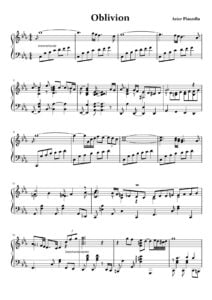 |
|
| Astor Piazzolla – Onda Nueve (Tango) Piano | Astor Piazzolla – Onda Nueve (Tango) Piano | |
| Astor Piazzolla – Otoño Porteño (guitar sheet music) | Astor Piazzolla – Otoño Porteño (guitar sheet music) | |
| Astor Piazzolla – Piano SongBook (Angel, Libertango, 6 Tangos, Estaciones Porteñas) |
 |
|
| Astor Piazzolla – Preludio 9 (Piano) | Astor Piazzolla – Preludio 9 (Piano) | |
| Astor Piazzolla – Río Sena (Tango) Piano | Astor Piazzolla – Río Sena (Tango) Piano | |
| Astor Piazzolla – Romanza del Duende (Piano) | Astor Piazzolla – Romanza del Duende (Piano) | |
| Astor Piazzolla – sheet music – Suite del Angel (Piano) |
 |
|
| Astor Piazzolla – Soledad (Solitude) Full score sheet music | Astor Piazzolla – Soledad (Solitude) Full score sheet music (first page) | |
| Astor Piazzolla – Suite Troileana 2 guitars (Bandoneon, Zita, Whisky, Escolaso) |
 |
|
| Astor Piazzolla – Suite Troileana 2 guitars arr. Sergio Assad (Bandoneon, Zita, Whisky, Escolaso) |
 |
|
| Astor Piazzolla – Suite Troileana arr for Piano (Bandoneon, Zita, Whisky, Escolaso) |
 |
|
| Astor Piazzolla – Tangos for 2 Pianos |
 |
Astor Piazzolla – Tangos for 2 Pianos |
| Astor Piazzolla – Tangus Dei (Piano) |
 |
|
| Astor Piazzolla – The Last Tango Music Of Guitar arr. |
 |
|
| Astor Piazzolla – Tristango (Piano) | Astor Piazzolla – Tristango (Piano) | |
| Astor Piazzolla – Vuelvo Al Sur (10 tangos and other pieces arr. piano) |
 |
Astor Piazzolla – Vuelvo Al Sur |
| Astor Piazzolla -Four, For Tango – Score |
 |
|
| Astor Piazzolla (Spanish Español Ed. 2018 El Ateneo 2020) (María Susana Azzi) Biography Book |
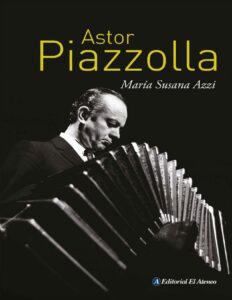 |
|
| Astor Piazzolla (Tango) Balada Para Un Loco – Guitar (letra Horacio Ferrer) |
 |
|
| Astor Piazzolla 100 Años Edicion Aniversario Sus mejores obras para piano |
 |
Astor Piazzolla 100 Años Edicion Aniversario Sus mejore obras para piano |
| Astor Piazzolla 25 Tangos for Clarinet and piano Clarinet Part in Bb |
 |
Astor Piazzolla 25 Tangos for Clarinet and piano Clarinet Part in Bb |
| Astor Piazzolla 28 tangos arranged For Piano |
 |
Astor Piazzolla 28 tangos arranged For Piano |
| Astor Piazzolla Album 20 compositions arr. for Piano |
 |
Piazzolla album |
| Astor Piazzolla Ave Maria (Piano and voice) |
 |
|
| Astor Piazzolla Cinco Piezas For Guitar |
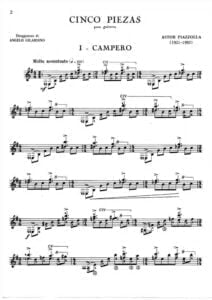 |
|
| Astor Piazzolla Color de Buenos Aires Suite letra Horacio Ferrer |
 |
|
| Astor Piazzolla Contrabajeando Double Bass And Piano Contrabajo Y Piano |
 |
|
| Astor Piazzolla Extasis Piano (Tango) |
 |
|
| Astor Piazzolla Flute or Violin Piano Collection |
 |
|
| Astor Piazzolla For Violin And Guitar (Astor Piazzolla) |
 |
Astor Piazzolla For Violin And Guitar (Astor Piazzolla)_compressed |
| Astor Piazzolla Guitar compositions Collection (Guitarra) sheet music, partituras | Astor Piazzolla Guitar compositions (Guitarra) sheet music, partituras | |
| Astor Piazzolla Horacio Ferrer Chiquilin De Bachin Piano vocal |
 |
|
| Astor Piazzolla La Muerte Del Angel Trio Violin Cello Piano Score |
 |
|
| Astor Piazzolla Le Grand Tango – Two Pianos | Astor Piazzolla Le Gran Tango – Two Pianos | |
| Astor Piazzolla Libertango (Guitar Solo Arr.) With Tab |
 |
|
| Astor Piazzolla Milonga Del Àngel (For Chamber Orchestra) Tangos |
 |
|
| Astor Piazzolla Oblivion (piano solo) |
 |
|
| Astor Piazzolla Oblivion arr. for 2 violins |
 |
|
| Astor Piazzolla Oblivion for Violin or Flute Cello Piano | Astor Piazzolla Oblivion for Violin or Flute Cello Piano | |
| Astor Piazzolla Oblivion Trans Solo Piano | Astor Piazzolla Oblivion Trans Solo Piano sheet music pdf | |
| Astor Piazzolla Oblivion Violin Guitar |
 |
|
| Astor Piazzolla Obras Completas Guitarra For Guitar |
 |
Astor Piazzolla Obras Completas For Guitar |
| Astor Piazzolla Piano Collection |
 |
Astor Piazzolla Piano Collection |
| Astor Piazzolla Piano Meditango |
 |
|
| Astor Piazzolla Romance Del Diablo Flauta Violin and Piano |
 |
|
| Astor Piazzolla Sensuel Piano |
 |
|
| Astor Piazzolla Tangazo for Orchestra Variaciones sobre Buenos Aires para orquestra |
 |
|
| Astor Piazzolla Tango Etudes (for flute or Violin) | Astor Piazzolla Tango Etudes (for flute or Violin) | |
| Astor Piazzolla Tango S V P For Violin Ensemble Solo | Astor Piazzolla Tango S V P For Violin Ensemble Solo | |
| Astor Piazzolla Tangos Arr Phillip Keveren The Phillip Keveren Series Piano Solo |
 |
Astor Piazzolla Tangos Arr Phillip Keveren The Phillip Keveren Series Piano Solo |
| Astor Piazzolla Tanti Anni Prima Ave Maria For Piano solo |
 |
|
| Astor Piazzolla Tanti Anni Prima Ave Maria Violin and Piano |
 |
|
| Astor Piazzolla Vuelvo Al Sur Flute or Violin and Piano | Astor Piazzolla Vuelvo Al Sur Flute or Violin and Piano | |
| Astor Piazzolla y Anibal Troilo- Contrabajeando (Tango) Piano | Astor Piazzolla y Anibal Troilo- Contrabajeando (Tango) Piano | |
| Atlantic Starr – Always | ||
| Atomic Kitten – The Tide Is High | ||
| Atomic The Musical By Philip Foxman And Danny Ginges Piano Vocal Score |
 |
|
| Atonement – Dario Marianelli (For Piano) |
 |
Atonement – Dario Marianelli (For Piano) |
| Au Clair De La Lune – Traditional (Musescore File).mscz | ||
| Audioslave Out Of Exile Guitar TABs |
 |
Audioslave Out Of Exile Guitar TABs |
| Audition (The Fools who Dream) La La Land OST | ||
| Audra Mcdonald Build A Bridge (Songbook) (Audra Mcdonald) Piano Vocal Guitar chords |
 |
Audra Mcdonald Build A Bridge (Songbook) (Audra Mcdonald) Piano Vocal Guitar chords |
| Augustana – Boston | ||
| Aura Lee (intermediate great jazz arrangement) G. Poulton | Aura Lee Jazz | |
| Aura Lee By G. Poulton Jazz Arrangement.mxl | ||
| Aura Lee G. Poulton (Easy version ) | Aura Lee Easy version | |
| Aura Lee Jazz (Musescore File).mscz | ||
| AURORA Conqueror Piano Solo arr. |
 |
|
| AURORA Running With The Wolves |
 |
|
| Aurora – Cure For Me |
 |
|
| AURORA Forgotten Love Piano with lyrics |
 |
|
| AURORA Half The World Away Sheet Music Piano Vocal Guitar chords |
 |
|
| AURORA Into The Unknown from Disney’s Frozen |
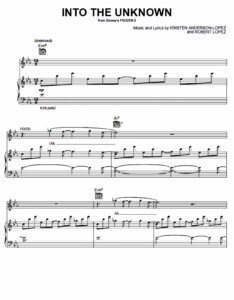 |
|
| AURORA It Happened Quiet Piano Solo arr. |
 |
|
| AURORA Runaway Piano Vocal guitar Chords |
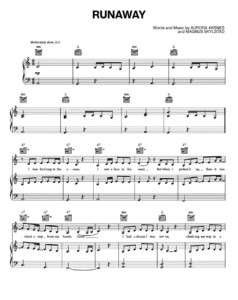 |
|
| AURORA Songbook Sheet Music Anthology Collection | AURORA Songbook Sheet Music Anthology Collection | |
| AURORA The River Aurora Piano Solo arr. |
 |
|
| Automatic Harmonic Analysis of Jazz Chord Progressions Using a Musical Categorial Grammar (Mark Wilding) | Automatic Harmonic | |
| Autour Du Jazz Guitar 4 pièces pour guitare (Thierry Tisserand) |
 |
Autour Du Jazz Guitar 4 pièces pour guitare (Thierry Tisserand) Contents — autour du jazz |
| Autum Song (October) – Tchaikovsky The Seasons (Musescore File).mscz | ||
| Autumn In New York (Guitar Arr. With Tab) | Autumn In New York (Guitar Arr. With Tab) |
